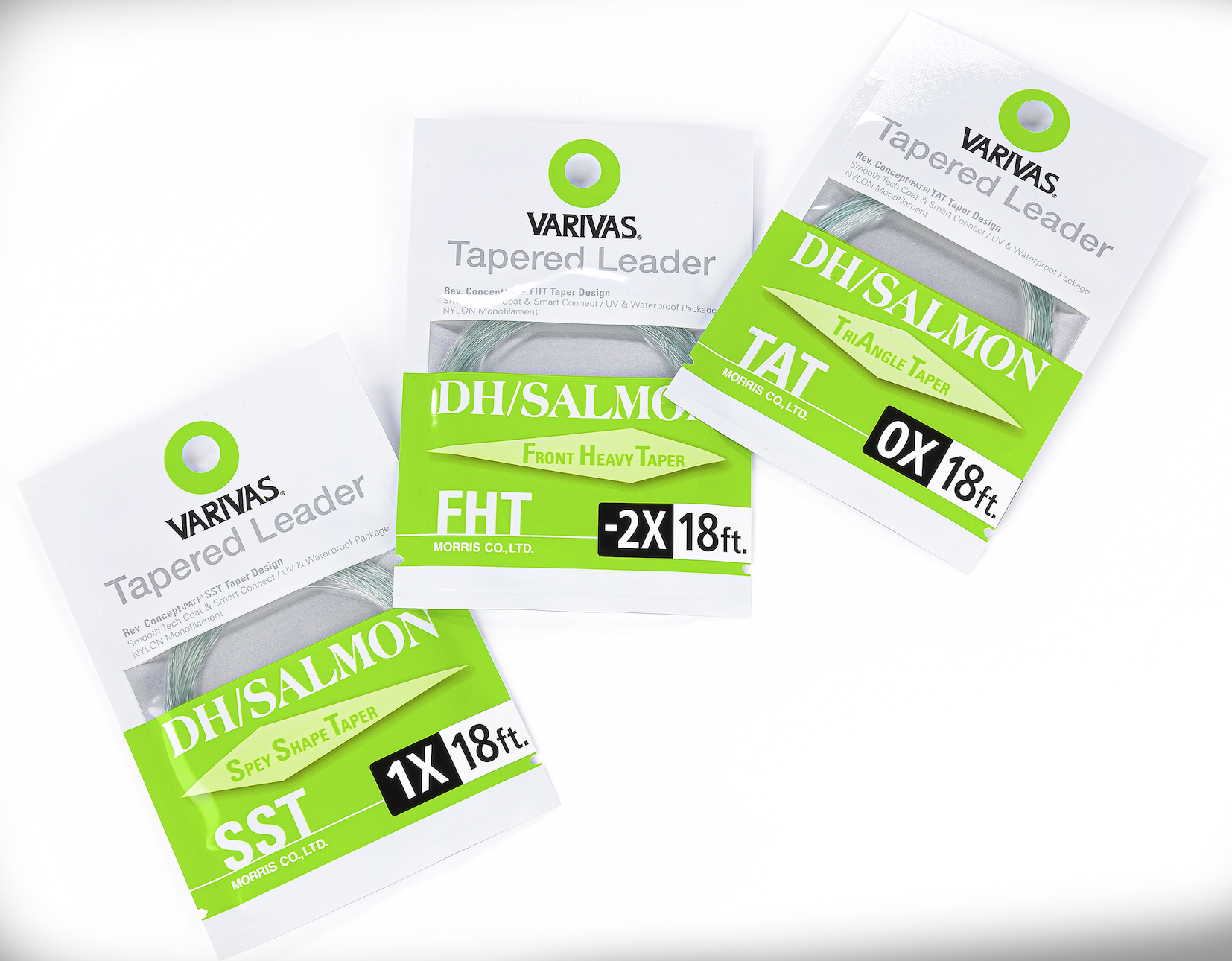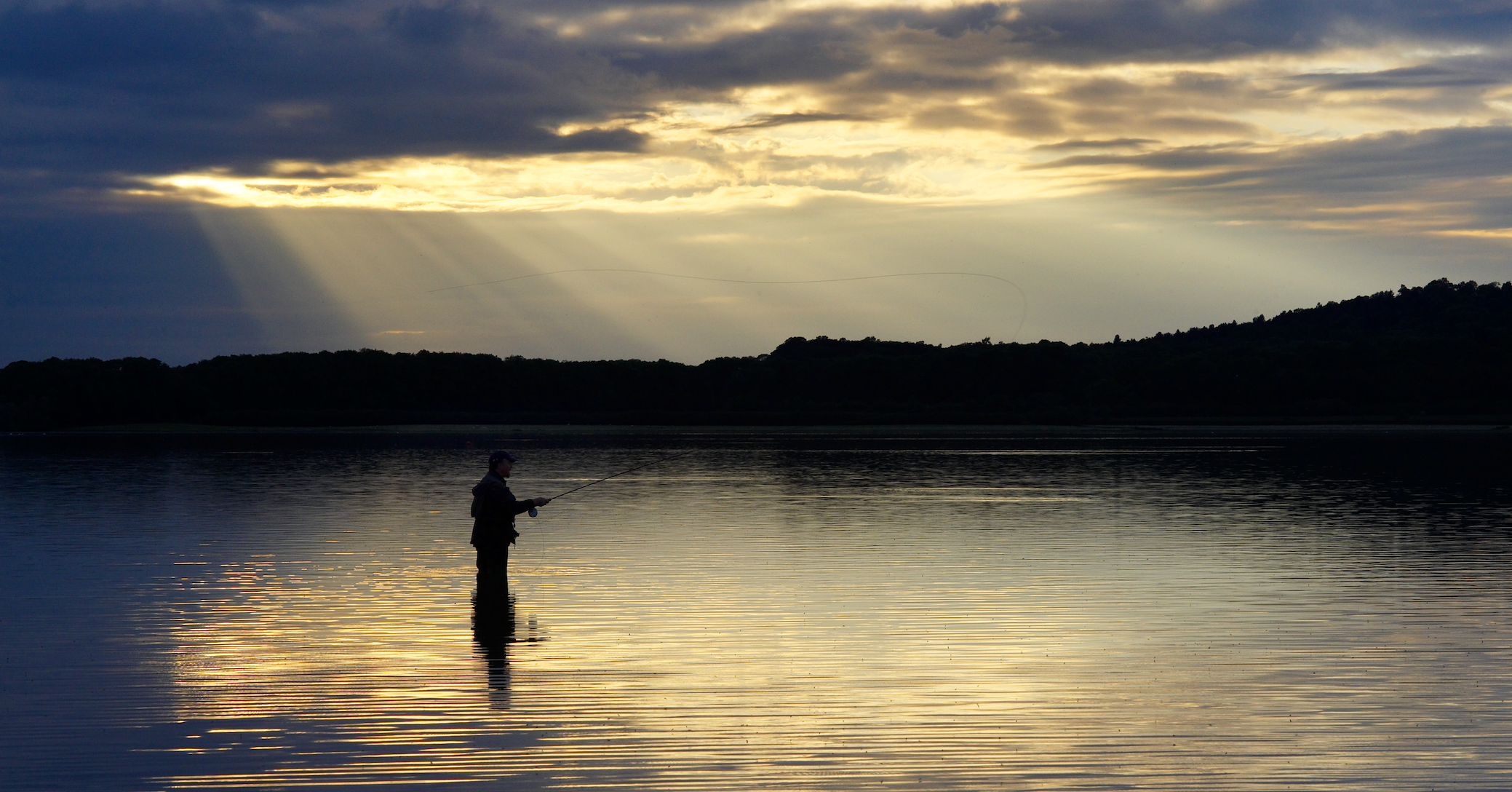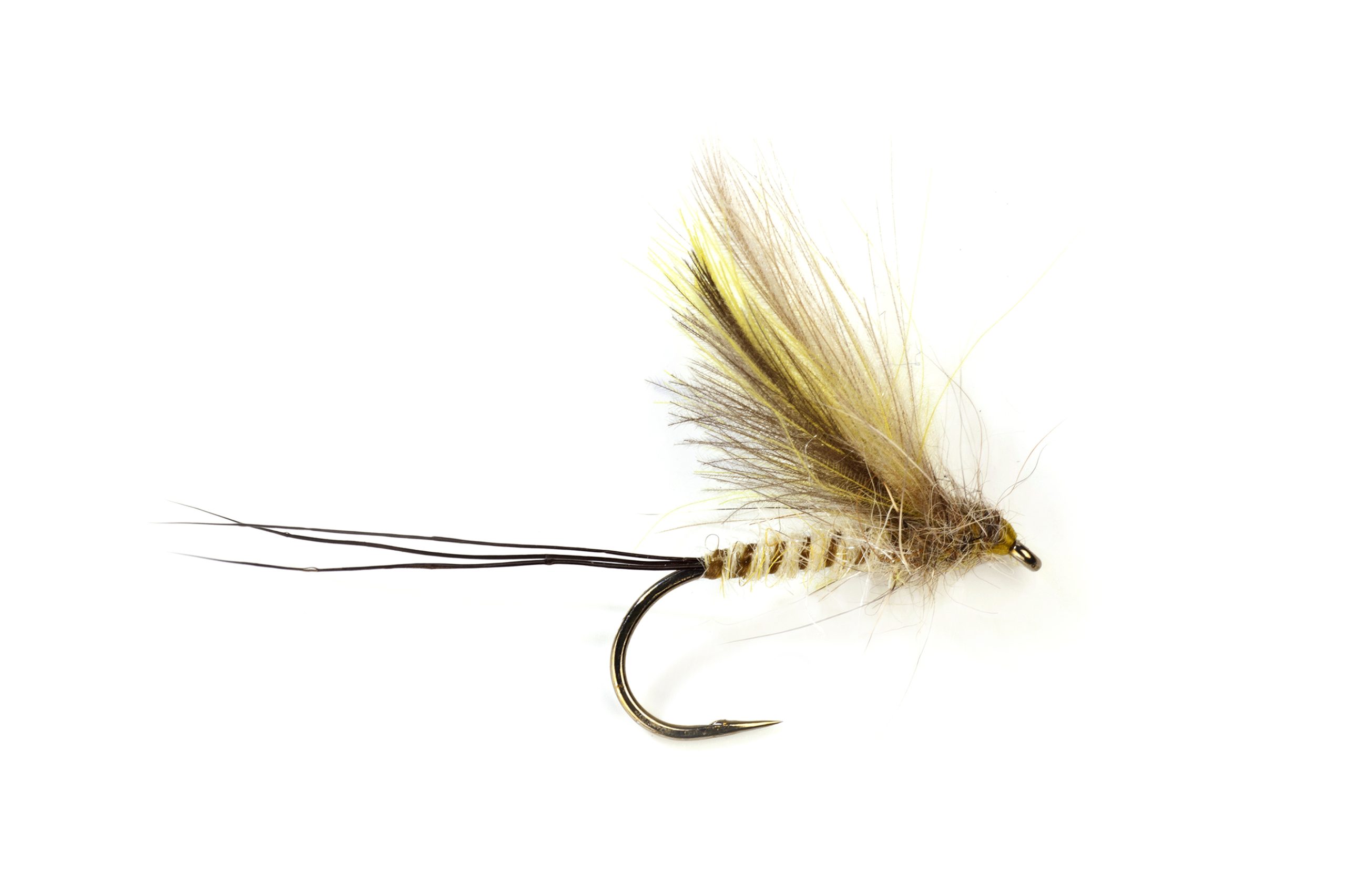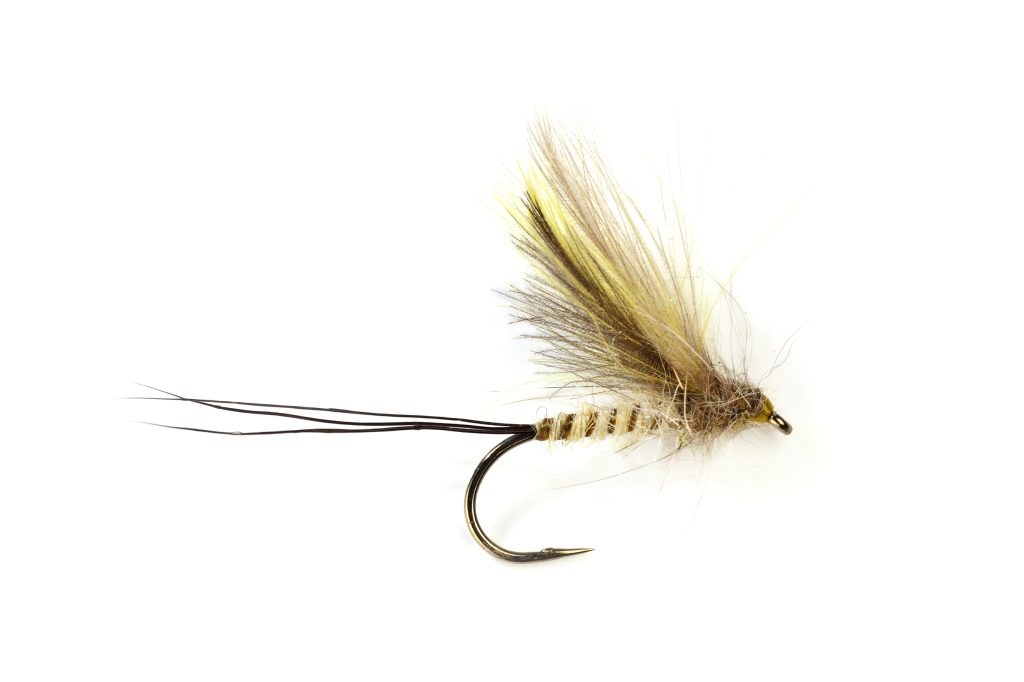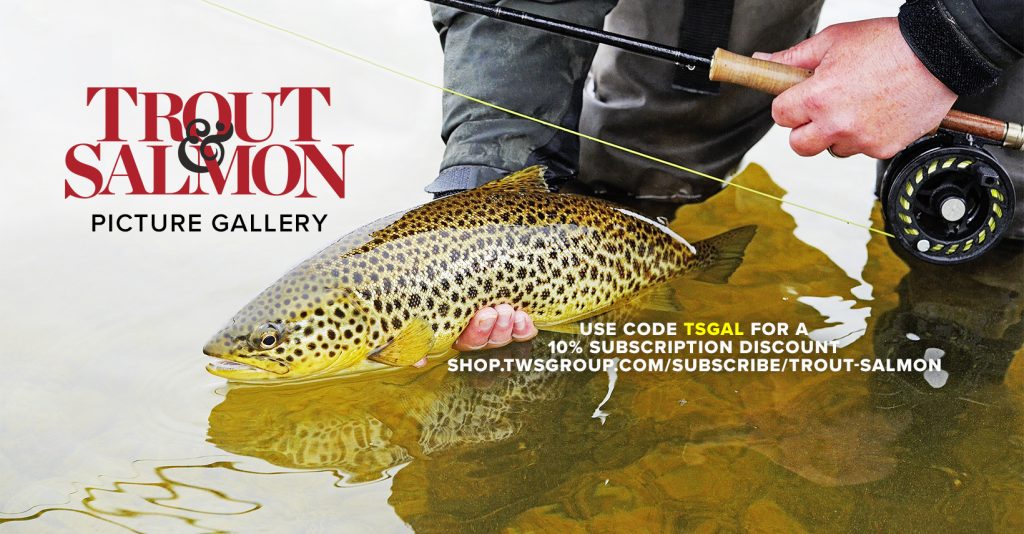Fly tying
News
HOW TO TIE THE YELLOW MAYFLY DUN
Would you like to appear on our site? We offer sponsored articles and advertising to put you in front of our readers. Find out more.
When tying imitations of the mayfly dun, mallard flank feather is a very effective but under-used material, at least on this side of the Irish Sea. The light speckling creates an effect similar to that of a mayfly dun’s wings, especially if the feather has been dyed either yellow or a similar shade known as summer duck. It comes in a range of sizes, the smallest of which provide the base for the classic Fan-wing Mayfly where a pair of matched plumes create wings where the natural curve of the feather diverge or fan to imitate the mayfly’s wings.
In wet flies the material is normally used as a hackle, the long fibres sweeping back over the body. It can also be used in a similar way when used to tie a dry fly but in this instance it is normal to use a smaller plume so that the hackle turns can be used in a more upright position. Also the feather fibres may be used in bunches.
HOOK: Size 8 medium weight wet fly or nymph hook
THREAD: Yellow
TAIL: Moose hair
RIB: Thick brown thread
BODY: Cream coloured dubbing
WING: Dirty yellow CDC and dyed yellow mallard flank
THORAX: Dark brown dubbing
HACKLE: Golden badger, ginger or grizzle cock hackle
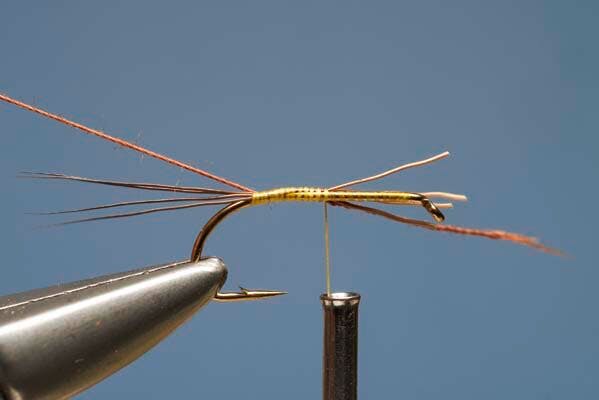
- Fix hook in vice and run thread down shank until it reaches the bend. At this point catch in a few moose hairs to form the tails and a length of brown thread.
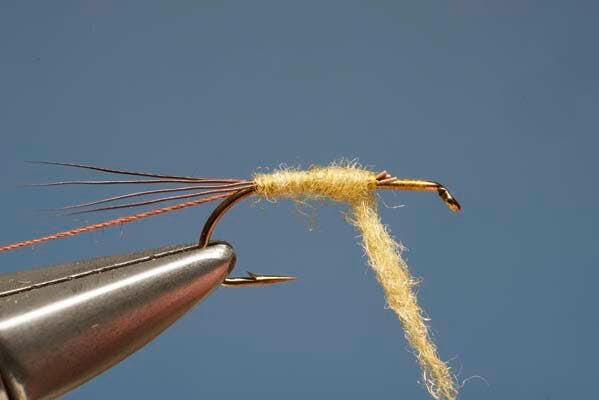
- Secure waste ends of moose hair and brown thread along the shank. Take a pinch of cream fur and dub onto thread. Wind on the fur in close turns.
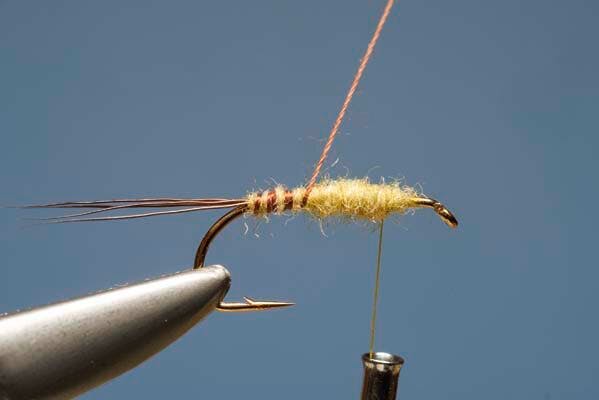
- Apply further turns of fur to create a tapered body. Wind thread in two close sets of double turns then carry it along the body in open, evenly spaced turns.
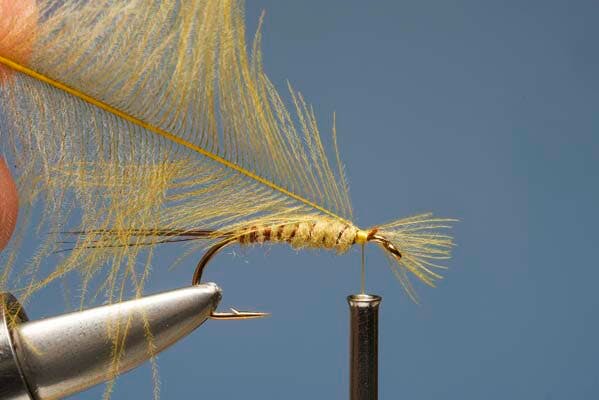
- Secure the loose end of the brown thread then trim off the waste end. Take a large CDC plume that has been dyed dirty yellow and catch it in by its tip.
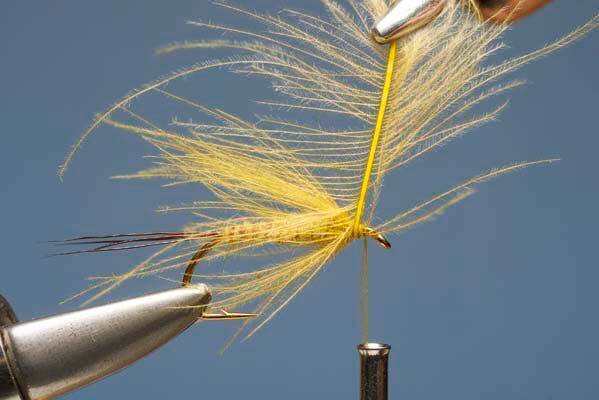
- Take hold of the CDC feather by its base and working toward the eye apply three or four turns. As each turn is applied stoke fibres back over body.
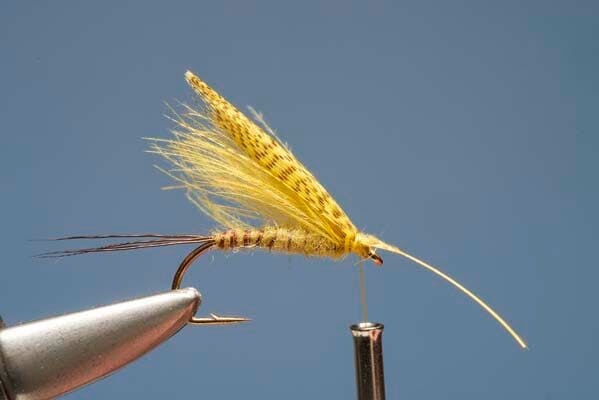
- Secure CDC feather and trim off waste. Take a dyed yellow mallard flank feather and strip off the base fibres. Catch in the tip on top of the CDC fibres.

- Secure the base of the mallard feather and trim off the waste then catch in a badger cock hackle. Dub on a small pinch of brown fur to form a thin rope.
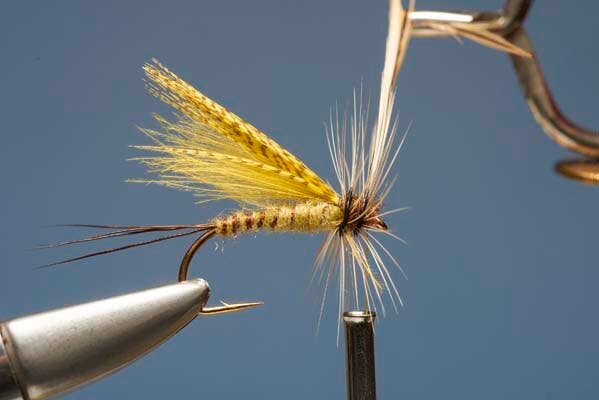
- Wind on close turns of fur in front of wing to form a small thorax. Take hold of hackle tip with pliers and wind on two or three open turns over the thorax.
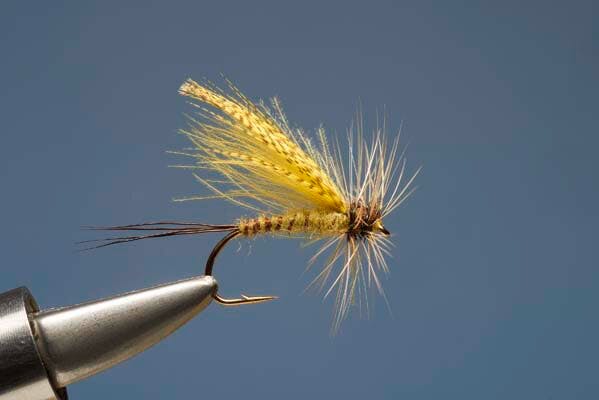
- Once hackle has reached eye, secure tip with tight thread turns before trimming off waste. Build a small head then cast off thread with a whip finish.
Related articles
Fly tying
Tie the CDC Mayfly Dun
Try this low-riding Mayfly Dun for fussy trout that refuse a high-riding dry-fly.
By Time Well Spent
Manage Consent
To provide the best experiences, we use technologies like cookies to store and/or access device information. Consenting to these technologies will allow us to process data such as browsing behavior or unique IDs on this site. Not consenting or withdrawing consent, may adversely affect certain features and functions.
Functional Always active
The technical storage or access is strictly necessary for the legitimate purpose of enabling the use of a specific service explicitly requested by the subscriber or user, or for the sole purpose of carrying out the transmission of a communication over an electronic communications network.
Preferences
The technical storage or access is necessary for the legitimate purpose of storing preferences that are not requested by the subscriber or user.
Statistics
The technical storage or access that is used exclusively for statistical purposes.
The technical storage or access that is used exclusively for anonymous statistical purposes. Without a subpoena, voluntary compliance on the part of your Internet Service Provider, or additional records from a third party, information stored or retrieved for this purpose alone cannot usually be used to identify you.
Marketing
The technical storage or access is required to create user profiles to send advertising, or to track the user on a website or across several websites for similar marketing purposes.

